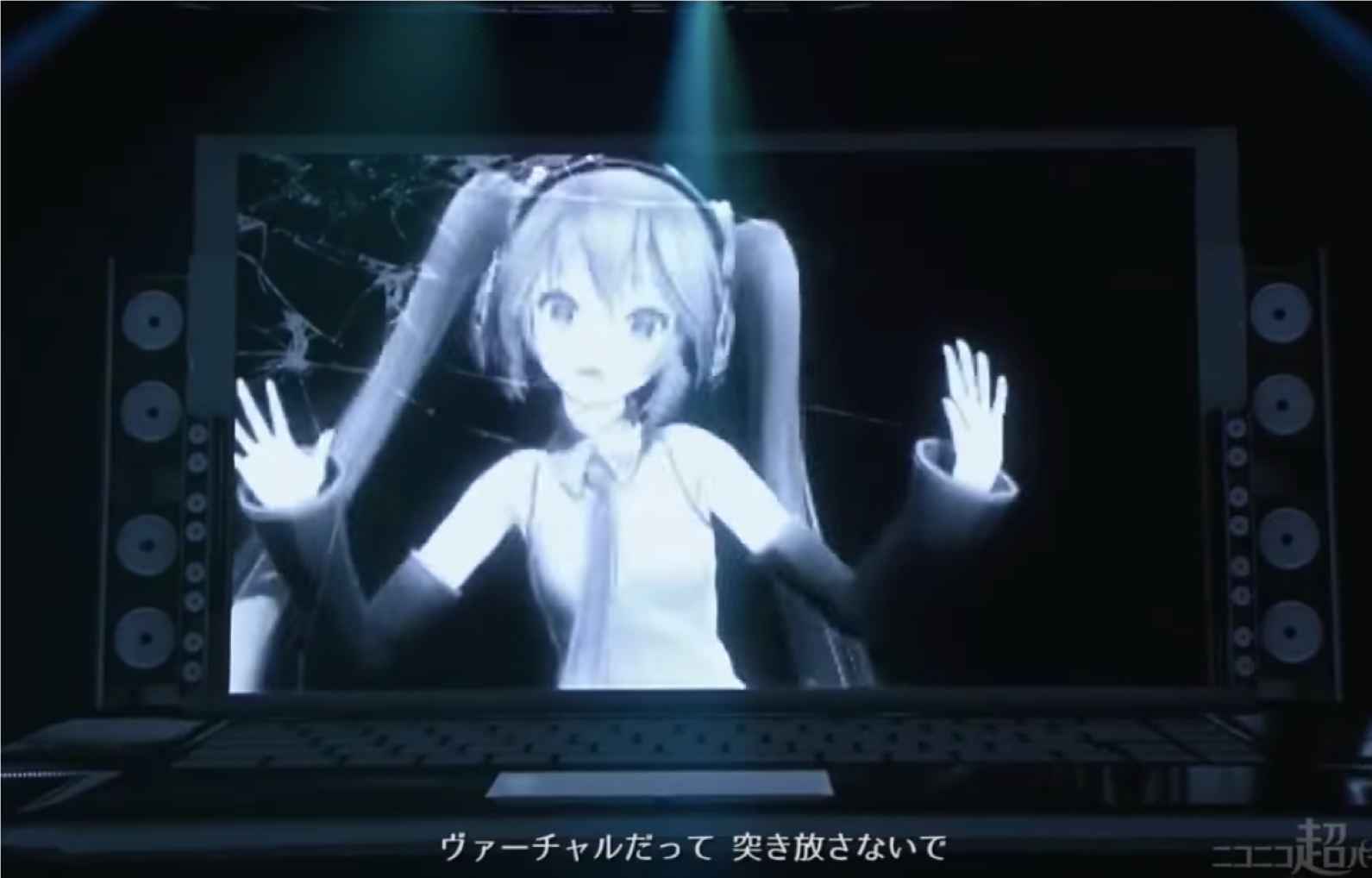

This project emerges from my research on the intersection between posthuman dance aesthetics, the dematerialization of the female body in digital culture and potential feminist resistances to this vanishing body. I used my own body, a PC and a Kinect to feed the choreography for Kate Bush’s cult classic song “Wuthering Heights” (recently re-popularized through a series of international flash mobs) into the 3D animation program MikuMikuDance (based on Japanese Vocaloid character Hatsune Miku). In collaboration with MikuMiku expert Michael Li, I then manipulated the resulting avatar body and her violent, glitchy dance. In studying the machinic aesthetics of the body that emerge from cheap mo-cap applications such as the Kinect, the value of mimetic realism can be called into question. Where does the organic human body exist (or persist), especially in relation to “bodies” such as avatars, digital renderings and filmic or animated traces?
Although Bush and Miku may seem like disparate entities, I see them as complimentary test-cases in a study of posthuman dance. The lyrics and music video for Bush’s “Wuthering Heights” tie her to discourses of nature, Romantic literature, and bodies haunted by madness; Hatsune Miku is a feminized Japanese hologram whose body is always in a state of dematerialization and whose fans write her songs (Dōjinshi fan culture). By uniting these two influential and strange popstars with my own dancing body, I hope to trace a series of uncanny affects in which multiple female bodies become instruments, puppets and ghosts, and in which motion tracing becomes a means not just for mimetic realism, but to attempt to learn the machine’s truth.
WATCH THE VIDEO